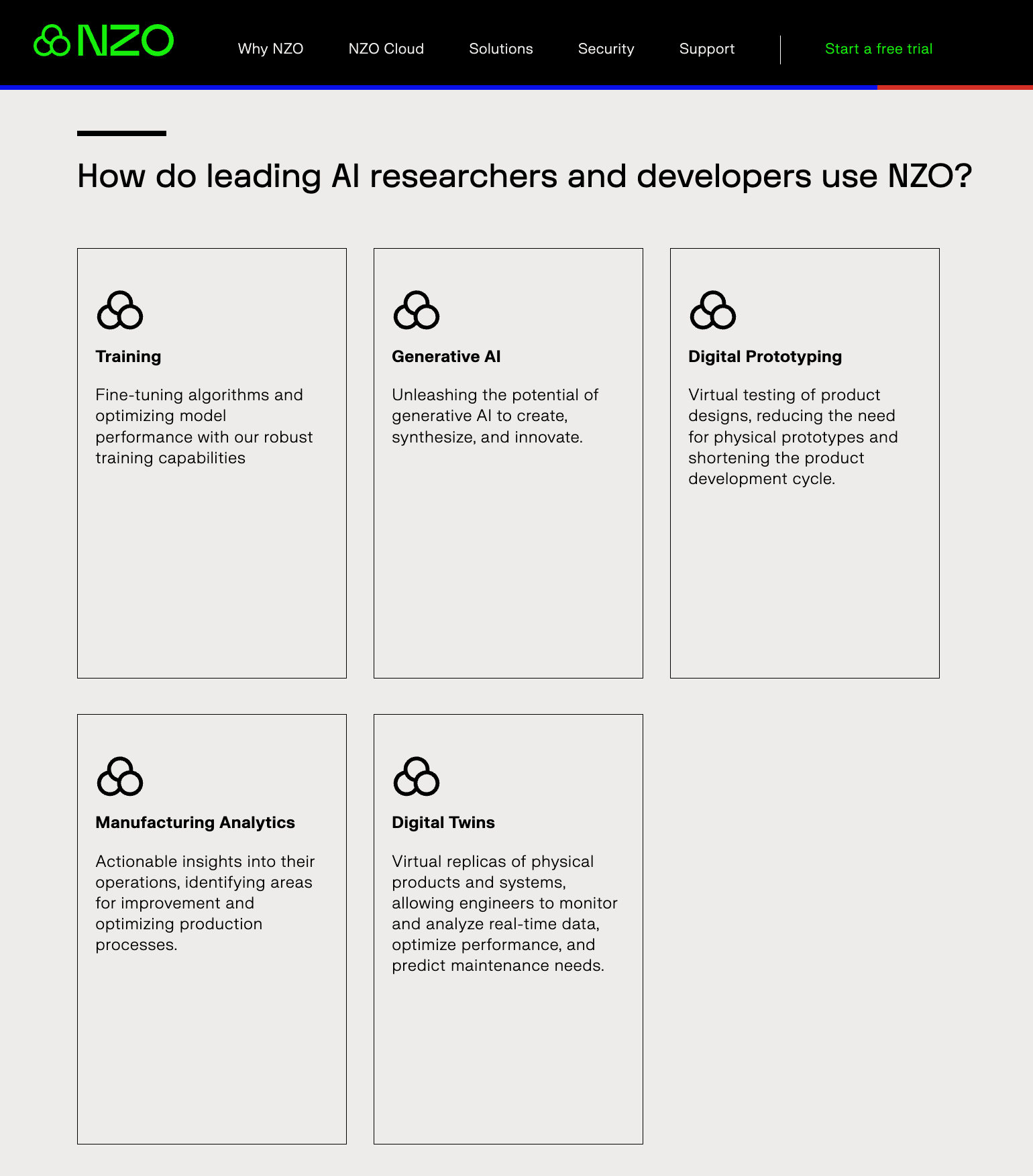Table of Contents

Cloud computing has dramatically reshaped the business technological landscape, becoming a fundamental component of the modern digital ecosystem. From transforming business operations with cloud-based productivity tools and collaboration platforms to revolutionizing industries like healthcare with secure data management and telemedicine solutions, cloud computing’s impact is profound and pervasive. By providing detailed insights into each application, this article aims to highlight the critical role cloud computing plays in driving innovation and improving performance in our increasingly connected world.
Overview of Cloud Computing Applications
Cloud computing applications encompass a wide range of services that are delivered over the Internet. From cloud-based productivity tools to collaboration platforms, cloud computing has transformed the way businesses operate and individuals work.
1. Scalability
One of the key benefits of cloud computing business applications is their scalability. Businesses can easily scale their operations up or down based on demand without the need for significant upfront investments in infrastructure. This flexibility allows companies to adapt to changing market conditions quickly and efficiently, giving them a competitive edge in today’s fast-paced business environment.
2. Security
Furthermore, cloud computing offers enhanced data security measures compared to traditional on-premises solutions. Cloud service providers invest heavily in state-of-the-art security technologies and protocols to protect their customers’ data from cyber threats and unauthorized access. This level of security and compliance is crucial for industries handling sensitive information, such as healthcare and finance, where data privacy and regulatory requirements are paramount. NZO Cloud offers access to security engineers during your onboarding process to ensure that you build the comprehensive security cloud infrastructure you need to support your business operations.
Importance and Relevance of Cloud Computing in Various Industries
Cloud computing plays a vital role in enhancing operational efficiency and scalability in various industries. Whether it’s healthcare, education, or software development, organizations are leveraging cloud computing business applications to drive innovation and streamline their processes.
As an example, one industry that has greatly benefited from cloud computing business applications is healthcare. With the increasing amount of patient data being generated, healthcare organizations are turning to cloud-based solutions to securely store and manage this information. Cloud storage platforms provide a reliable and scalable infrastructure for healthcare providers to store electronic health records (EHRs) and medical images. This ensures data availability and enables healthcare professionals to access patient information from anywhere, improving the quality and speed of patient care.
1. Cloud Computing Applications in Business Operations
Businesses are increasingly relying on cloud-based solutions for their day-to-day operations:
- Cloud-based productivity tools: Businesses utilize tools like Google Workspace and Microsoft 365 for word processing, spreadsheet management, and collaborative document editing, enhancing seamless collaboration and productivity in the cloud.
- Cloud storage and file-sharing platforms: Platforms like Dropbox and Google Drive simplify how businesses store, access, and share files, ensuring secure file storage and improved data management in the cloud.
- Cloud-based CRM systems: Systems like Salesforce and HubSpot offer a centralized platform for managing customer interactions, sales pipelines, and marketing campaigns, allowing businesses to track and analyze customer data and personalize experiences to drive growth.
2. Collaboration Platforms
In today’s digital age, effective collaboration is essential for business success. Collaboration platforms like Slack and Microsoft Teams provide organizations with a centralized communication hub, facilitating seamless teamwork across geographic boundaries. Here are the key features and benefits of these platforms:
- Real-time messaging and communication: Enable instant communication and interaction among team members, fostering a dynamic and responsive work environment.
- File sharing and management: Simplify the process of sharing documents and other files, ensuring that everyone has access to the latest versions.
- Video conferencing: Allow for face-to-face meetings and discussions, which are crucial for maintaining team cohesion and facilitating complex project management tasks.
- Project management tools: Help organize tasks, track progress, and manage deadlines within a unified platform.
- Integration with cloud-based tools: Enhance productivity by integrating with other applications such as CRM systems, email, and productivity suites, allowing seamless access to various tools without the need to switch interfaces.
These features collectively enhance productivity and create a collaborative work environment where ideas can be easily shared and refined in real time, ensuring teams can operate efficiently and effectively, regardless of their physical locations.
3. Cloud Computing in Software Development
Software development processes have also been revolutionized by cloud computing. Cloud-based development environments such as AWS Cloud9 and GitHub Codespaces offer developers the flexibility to code, test, and deploy applications in the cloud. This eliminates the need for complex local setups and enables teams to collaborate on code seamlessly, integrating easily with providers like NZO Cloud.
Moreover, continuous integration and deployment (CI/CD) tools like Jenkins and Travis CI automate the build, test, and deployment processes, ensuring faster and more reliable software releases. Cloud-based testing and quality assurance (QA) environments provided by platforms like Sauce Labs and BrowserStack enable developers to efficiently test applications across multiple browsers and devices.
Furthermore, cloud-based version control systems like Git enable developers to collaborate on code repositories, track changes, and manage code branches effectively. This promotes code reusability, version control, and efficient collaboration among development teams.
4. Cloud Computing in Data Analytics
In the era of big data, cloud computing has become an essential component of data analytics. Big data processing and analytics platforms like Apache Hadoop and Apache Spark enable organizations to process and analyze vast amounts of data efficiently. These platforms provide scalable and distributed computing capabilities, allowing organizations to extract valuable insights from their data.
Data warehousing and business intelligence tools such as Amazon Redshift and Google BigQuery enable organizations to store, manage, and analyze structured and unstructured data. Furthermore, cloud-based machine learning and AI services like Amazon SageMaker and Google Cloud AI empower organizations to leverage advanced analytics and predictive modeling to make data-driven decisions.
By harnessing the power of cloud computing, organizations can unlock the full potential of their data, gaining a competitive edge in the market and driving innovation across various industries.
5. Cloud Computing in Retail
In retail, cloud computing business applications have become a cornerstone for driving personalized shopping experiences and enhancing operational efficiency. Retailers utilize cloud-based platforms to manage inventory in real-time, streamline supply chain operations, and deliver tailored marketing strategies that resonate with individual consumer preferences. This integration allows retailers to respond dynamically to market trends, consumer behaviors, and seasonal demands, thereby optimizing both customer satisfaction and profitability. Moreover, cloud solutions facilitate seamless omnichannel retailing, enabling customers to interact with brands across multiple online, mobile, and in-store channels without friction, significantly enhancing the overall customer journey.
Applications of Cloud Computing in Healthcare

The healthcare industry has also been able to benefit from significant advancements in cloud computing applications. Cloud computing healthcare applications include Electronic health record (EHR) systems like Epic Systems and Cerner, which streamline patient record management, enhance efficiency, and improve patient care. Cloud-based EHR systems enable healthcare professionals to access patient information securely and in real-time, regardless of their location.
Further, cloud computing has revolutionized medical imaging storage and sharing. Platforms like PACS (Picture Archiving and Communication System) store medical images such as X-rays, MRIs, and CT scans in the cloud, allowing for easy access and collaboration among healthcare providers. This streamlined process enhances diagnostic accuracy and speeds up treatment decisions, ultimately benefiting patient care.
| Application | Description | Benefits |
| Electronic Health Record (EHR) Systems | Systems like Epic Systems and Cerner manage patient records stored in the cloud. | Enhances efficiency, improves patient care, and allows healthcare professionals secure, real-time access. |
| Medical Imaging Storage and Sharing | Platforms like PACS store and manage medical images (e.g., X-rays, MRIs, CT scans) in the cloud. | Facilitates easy access and collaboration among healthcare providers, improving diagnostic accuracy and treatment speed. |
| Telemedicine | Cloud-based platforms that enable remote consultations and virtual healthcare services. | Allows healthcare professionals to offer remote medical advice, monitor patients, and facilitate timely interventions. |
| Remote Patient Monitoring Solutions | Integration of IoT devices with the cloud for continuous health data collection and analysis. | Enables early detection of health issues, personalized treatment plans, and improved patient outcomes through continuous monitoring. |
| Health Data Analytics and Predictive Modeling | Cloud tools that analyze patient data to identify trends, predict disease outbreaks, and enhance healthcare outcomes. | Improves decision-making and proactive healthcare interventions; aids in resource allocation |
Telemedicine and Remote Patient Monitoring Solutions
In recent years, telemedicine has gained traction, and cloud computing has played a vital role in its adoption. Telemedicine platforms enable remote patient consultations and virtual healthcare services. Cloud-based telemedicine solutions allow healthcare professionals to provide medical advice, monitor patients remotely, and facilitate timely interventions.
Moreover, the integration of Internet of Things (IoT) devices with cloud-based remote patient monitoring solutions has transformed healthcare delivery. Wearable devices and sensors collect real-time health data, which is then securely transmitted to the cloud for analysis. This continuous monitoring enables early detection of health issues, personalized treatment plans, and improved patient outcomes.
Health Data Analytics and Predictive Modeling Tools
Thanks to cloud computing, Health Data Analytics and Predictive Modeling Tools have become critical components in the healthcare sector. This technology allows healthcare organizations to leverage the power of data analytics and predictive modeling to enhance patient care and operational efficiency. Here’s how these tools are being used:
- Trend identification and disease prediction: Cloud-based tools analyze patient data to identify health trends and predict potential disease outbreaks, enabling timely and targeted responses.
- Improvement of healthcare outcomes: By analyzing extensive datasets, healthcare providers can enhance decision-making processes, leading to more effective patient treatment plans and improved health outcomes.
- Resource allocation and capacity planning: Predictive modeling tools analyze historical and current data to optimize staffing, bed availability, and medical supplies, ensuring that healthcare facilities are prepared to meet patient needs without resource wastage.
- Operational efficiency: This data-driven approach improves patient care and enhances healthcare facilities’ overall operational efficiency, ensuring that resources are used effectively and strategically.
Through cloud-based analytics and predictive modeling, healthcare providers can improve patient outcomes and achieve a higher level of operational intelligence and resource management.
Applications of Cloud Computing in Education
Education is another sector that has embraced cloud computing. The cloud provides educators and students with access to a vast array of educational resources, regardless of their physical location.
1. Learning Management Sytems (LMS)
Cloud-based learning management systems like Google Classroom and Moodle simplify the administration and delivery of educational content. These platforms enable educators to create and distribute course materials, conduct assessments, and facilitate student collaboration in a virtual environment.
2. Collaboration Tools
Cloud-based collaboration tools like Google Docs and Microsoft Office 365 enable students to collaborate on projects in real-time, helping to improve communication and teamwork.
3. Scalability
One significant advantage of cloud computing in education is the scalability it offers. Educational institutions can easily scale their resources up or down based on demand, allowing for flexibility in accommodating varying numbers of students or fluctuating storage needs. This scalability ensures that schools can efficiently manage their IT resources without incurring unnecessary costs.
4. Accessibility
Cloud computing also enhances accessibility for students with diverse learning needs. By storing educational materials in the cloud, educators can provide students with 24/7 access to resources, accommodating different learning styles and preferences. This accessibility fosters a more inclusive learning environment where students can engage with course materials at their own pace and convenience.
5. Data Security and Privacy
Cloud computing offers robust data security and privacy measures that are crucial for protecting sensitive educational data. By utilizing advanced encryption methods and secure data centers, cloud providers protect student and faculty information against unauthorized access and breaches. This security is especially important in maintaining compliance with educational standards and regulations, such as FERPA in the United States, which governs the access and release of students’ education records.
Future Cloud Computing Applications

Cloud computing continues to evolve at a rapid pace, reshaping how businesses, governments, and individuals use technology to solve complex problems, enhance daily operations, and innovate for the future. As cloud technologies mature, their applications’ horizons broaden, offering new capabilities and efficiencies. Here’s a look at some of the most promising future applications of cloud computing:
| Future Cloud Computing Application | Summary |
| Edge computing | Edge computing enhances cloud capabilities by processing data near its source, significantly cutting latency and bandwidth usage, and is particularly beneficial for real-time applications like IoT and autonomous vehicles. |
| Serverless computing | Serverless computing removes the need for server management from the user, allowing developers to focus on coding without infrastructure concerns, scaling automatically, and charging only for the resources used. |
| AI and machine learning integration | Integrating AI and machine learning with cloud computing enhances cloud services with capabilities like predictive analytics and automated threat detection, making advanced data analysis more accessible to organizations. |
| Quantum computing | Quantum computing is set to revolutionize fields like cryptography and medicine by offering cloud-based access to quantum processors, thereby eliminating the barrier of requiring personal quantum computing resources. |
| Hybrid and multi-cloud strategies | Hybrid and multi-cloud strategies utilize a combination of on-premises, private, and public clouds to provide flexibility and optimize workload placement based on compliance, cost, and performance needs. |
| Blockchain technology | Integrating blockchain with cloud computing improves the security and efficiency of cloud services by offering decentralized security features and creating more transparent systems for activities such as supply chain management and financial transactions. |
| Green (environmentally friendly) cloud computing | Green cloud computing aims to reduce the environmental impact of data centers through energy-efficient practices, using renewable energy sources and advanced cooling technologies to create sustainable cloud computing solutions. |
| Digital twins and simulation | Cloud computing supports the creation of digital twins, providing the necessary processing power and storage to simulate and analyze real-world conditions in industries like manufacturing and urban planning. |
| Disaster recovery and Business Continuity | Cloud-based solutions enhance disaster recovery and business continuity by enabling quick data recovery and high availability across diverse geographical locations without the need for physical infrastructure. |
| Enhanced mobile and remote work capabilities | Cloud computing boosts mobile and remote work efficiency by ensuring secure access to corporate resources and collaboration tools from any location or device. |
1. Edge Computing
Edge computing is set to transform cloud computing by processing data at the edge of the network, closer to the source of data. This approach significantly reduces latency and bandwidth use, making real-time data processing and decision-making faster and more efficient. Edge computing is particularly crucial for Internet of Things (IoT) devices, autonomous vehicles, and other applications that rely on speedy data analysis.
2. Serverless Computing
Serverless computing, or function-as-a-service (FaaS), abstracts server management and infrastructure decisions away from the users. It allows developers to focus solely on writing code that serves their business purposes without worrying about the underlying operating environment. This model can scale automatically and is only billed based on the execution of the functions, leading to high cost-efficiency. Future applications might see serverless computing becoming more mainstream, supporting everything from complex enterprise applications to personal app development.
3. AI and Machine Learning Integration

Cloud computing is increasingly being integrated with AI and machine learning to provide more intelligent, self-managing cloud services that can predict demand, detect threats, and automate resource management. This integration is not only enhancing the capabilities of cloud services but is also making them more accessible to organizations, thereby democratizing advanced data analysis tools.
4. Quantum Computing
Cloud-based quantum computing applications, though still in their infancy, promise to revolutionize problem-solving in fields such as cryptography, medicine, finance, and logistics. Cloud platforms are expected to play a crucial role in making quantum computing widely accessible. Companies like IBM and Google are already offering cloud-based quantum computing services that allow researchers and developers to run experiments without having their own quantum computers.
5. Hybrid and Multi-Cloud Strategies
Hybrid and multi-cloud strategies are becoming a staple in enterprise IT environments. These strategies involve using a mix of on-premises, private cloud, and public clouds to create a flexible, responsive IT environment. With the growing complexity of IT services and increasing regulatory demands, hybrid and multi-cloud strategies provide the agility to deploy the right workloads in the right environment based on compliance, cost, and performance criteria.
6. Blockchain Technology
Blockchain and cloud computing are increasingly being integrated to enhance the security and efficiency of cloud services. Blockchain can offer decentralized security features for cloud storage, making data less susceptible to hacks and unauthorized access. Additionally, blockchain can be used to create more transparent, efficient systems for everything from supply chain management to secure financial transactions in the cloud.
7. Green (Environmentally Friendly) Cloud Computing
As global environmental concerns continue to grow, green cloud computing is emerging as a vital aspect of future cloud applications. This approach involves designing data centers to minimize energy consumption and reduce carbon footprints. Techniques include using renewable energy sources, improving energy efficiency with advanced cooling methods, and using more energy-efficient hardware. The aim is to make cloud computing a sustainable technology, aligning with broader environmental goals.
8. Digital Twins and Simulation
Digital twins are virtual replicas of physical devices that can be used for simulation and analysis. Cloud computing enables the creation and management of digital twins by providing the massive processing power and data storage necessary to mirror and monitor real-world conditions and dynamics. This technology is particularly useful in industries like manufacturing, automotive, and urban planning, where real-time data synchronization between the physical and digital worlds is critical.
9. Disaster Recovery and Business Continuity
Cloud computing significantly enhances an organization’s disaster recovery (DR) and business continuity plans by enabling faster data recovery and maintaining high availability across geographically dispersed data centers. Cloud-based DR solutions are both cost-effective and flexible, allowing businesses to replicate their critical systems and data across multiple sites on the cloud provider’s network without the need for physical infrastructure investments.
10. Enhanced Mobile and Remote Work Capabilities
Mobile cloud computing applications facilitate more effective mobile and remote work environments by providing secure, ubiquitous access to organizational resources and collaboration tools. This adaptability supports a distributed workforce, allowing employees to work effectively from any location and on any device, thereby increasing productivity and employee satisfaction.
Conclusion
Cloud computing continues to redefine performance across various industries, integrating advanced technologies and offering scalable, dynamic solutions that drive efficiency and innovation. This article explored how cloud computing applications are shaping the future and highlighted their significant impact across different sectors.
Cloud computing is not just a technology; it’s a pivotal force behind significant transformations in how businesses operate and deliver value. Its applications, from enhancing operational efficiency with serverless computing to pushing the boundaries of machine learning and quantum computing, demonstrate the versatile and transformative power of cloud computing.
Industries from healthcare to finance are leveraging cloud capabilities to enhance service delivery, improve access to information, and ensure data security. As we look forward, the integration of technologies like AI, blockchain, and IoT with cloud computing promises even more revolutionary changes.
The continual evolution of cloud technology will undoubtedly bring new challenges. However, the ongoing advancements and the growing understanding of how to leverage this technology effectively suggest a future where cloud computing remains at the forefront of technological innovation, driving growth and transformation in an increasingly digital world.
With NZO Cloud, you’ll get a customized cloud solution that works for your business, not against it. Sign up for a free trial today to learn more.




